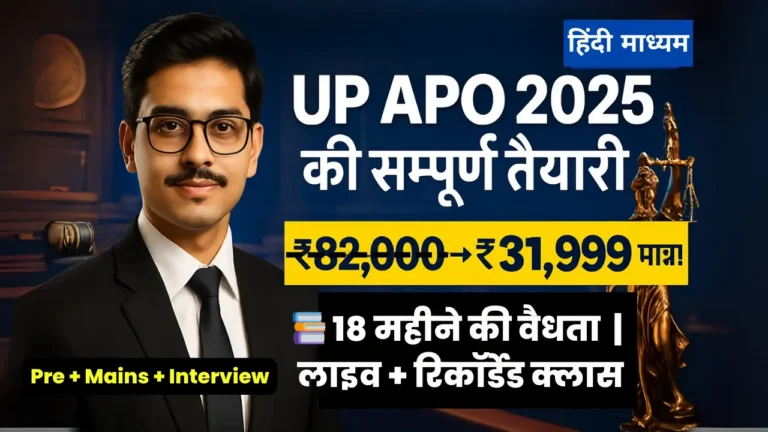The Supreme Court of India, in its May 2025 ruling in All India Judges Association vs Union of India, issued critical guidelines on Court Managers regularization across India. Learn about the Court’s directives, the role of Court Managers, the Assam Rules of 2018, and how this impacts judicial administration. A must-read for law students, judiciary aspirants, and legal professionals!
Table of Contents
Introduction: A New Dawn for Court Managers Regularization in India
Imagine a courtroom where judges can focus solely on delivering justice, free from the burden of administrative tasks. This vision is now closer to reality, thanks to a groundbreaking ruling by the Supreme Court of India on May 16, 2025, in the case of All India Judges Association vs Union of India. The Court addressed a long-standing issue: the plight of Court Managers, professionals hired to streamline court administration but often left in precarious, contractual roles.
In a detailed 36-page judgment authored by Chief Justice of India (CJI) B.R. Gavai, along with Justices Augustine George Masih and K. Vinod Chandran, the Supreme Court issued a series of directives to regularize Court Managers, ensuring they are recognized as essential cogs in the judicial machinery. This blog breaks down the ruling in a simplified, engaging way, exploring its background, implications, and why it matters for the future of India’s judiciary. Whether you’re a law student, a judiciary aspirant, or just curious about how courts work, this is your guide to understanding this landmark decision!
What Are Court Managers, and Why Do They Matter?
Court Managers are professionals, often with MBA degrees, hired to assist judges in managing the administrative side of courts. Introduced by the Thirteenth Finance Commission (FC-XIII) in 2010, their role is to:
- Support Judges: Handle non-judicial tasks like case scheduling, infrastructure management, and data collection, so judges can focus on delivering justice.
- Boost Efficiency: Improve court operations, reduce case backlogs, and ensure faster justice delivery.
- Bridge Gaps: Act as a link between judges, court staff, and other stakeholders to streamline processes.
Think of Court Managers as the “project managers” of the judiciary. They ensure that the court’s “engine” runs smoothly, allowing judges to dedicate their time to the “core work” of deciding cases. However, despite their critical role, many Court Managers have been working on temporary contracts with low pay and no job security—until now.
Read More: UKPCSJ 2025 Notification Out: Uttarakhand Civil Judge Exam Details & Syllabus
The Case: All India Judges Association vs Union of India
This case has a long history, dating back to 1989, when the All India Judges Association (AIJA) filed a writ petition to improve judicial infrastructure and service conditions. Over the years, the Supreme Court has issued various directions in this matter. In 2025, the focus shifted to Court Managers, prompted by several applications (I.A. Nos. 135045 of 2023, 187237, and 187240 of 2024) and a new writ petition (W.P. (C) No. 301 of 2024).
Here’s a snapshot of the parties involved:
- Petitioners: All India Judges Association and others.
- Respondents: Union of India and others.
- Intervenors/Applicants:
- Court Manager Welfare Association (seeking better pay, regularization, and uniform rules).
- Sachin Kumar Gupta and others (requesting regularization in Punjab, Haryana, and Chandigarh).
- Lokesh Kumar and another (seeking similar reliefs).
The Supreme Court was concerned that despite earlier directions (notably from its 2018 judgment) and recommendations by the Second National Judicial Pay Commission (SNJPC) in 2022, many states had failed to regularize Court Managers or even frame proper rules for their recruitment and service conditions.
Justice Surya Kant: From Hisar to NALSA Chairman – Life, Judgments, and Legacy
The Problem: Contractual Jobs and Discontinuation of Services
The Supreme Court expressed deep concern over two major issues:
- Contractual Employment: Many Court Managers, despite years of service, were still working on temporary or ad-hoc contracts with low pay (e.g., ₹40,000–₹70,000 per month in states like Rajasthan and Telangana) and no benefits like allowances or pensions.
- Discontinuation of Services: Some states had discontinued the posts of Court Managers, citing a lack of funds, ignoring their importance in judicial administration.
CJI Gavai noted, “We are at pains to say that even though the SNJPC in its Report had recommended and this Court in the judgment dated 2nd August 2018… had specifically directed the rules to be framed… various High Courts and State Governments have not yet complied.” This non-compliance was a major roadblock to improving judicial efficiency.
The Historical Context: How Court Managers Came to Be
To understand the Supreme Court’s ruling, let’s rewind to the origins of Court Managers:
1. The Thirteenth Finance Commission (FC-XIII) (2010-2015)
- Proposal: In its 2010 report, the FC-XIII introduced the concept of Court Managers to enhance court efficiency.
- Goal: Allow judges to focus on judicial work by delegating administrative tasks to professionals with MBA degrees.
- Funding: Allocated ₹300 crore for 2010–2015 to create Court Manager posts in every judicial district (one per district) and High Court (two per High Court, one per bench).
- Qualifications: A degree in management, 5+ years of experience in IT, HR, or financial systems, and excellent communication and computer skills.
2. Finance Ministry Guidelines (2010 and 2013)
- 2010 Letter: The Ministry of Finance issued guidelines on September 20, 2010, outlining the roles of Court Managers, such as case management, HR management, and IT systems management.
- 2013 Letter: On July 10, 2013, the Ministry clarified that states could use up to ₹20,000 per month per Court Manager from the allocated funds.
3. Supreme Court’s 2018 Judgment
In its August 2, 2018, ruling in the same All India Judges Association case, the Supreme Court emphasized the need for Court Managers as part of a “Court Complex.” It directed states to regularize existing Court Managers, recognizing their role in improving judicial efficiency.
4. SNJPC Report (2022)
The Second National Judicial Pay Commission (SNJPC), in its February 4, 2022, report, highlighted:
- Many Court Manager posts were vacant.
- Services were underutilized in some courts.
- Pay scales varied widely (e.g., ₹40,000 in Rajasthan vs. ₹7 lakh annually in Gujarat).
- Most Court Managers were still on contracts, despite the 2018 Supreme Court directive.
The SNJPC recommended regularization, higher pay, and uniform rules, praising the Gauhati High Court’s Assam Rules of 2018 as a model.
The Assam Rules of 2018: A Model for the Nation
The Supreme Court and the SNJPC both highlighted the Gauhati High Court (Appointment and Conditions of Service of Court Managers for the State of Assam) Rules, 2018, as a benchmark. Here’s why:
- Regularization: Court Managers in Assam are appointed on a regular basis with provisions for probation and confirmation.
- Pay Scale: ₹30,000–₹1,10,000 with a grade pay of ₹14,500 and a 3% annual increment—plus all allowances admissible to government servants.
- Duties: Clearly defined roles, such as assisting the Registrar General (in High Courts) or District Judges (in district courts), maintaining professional secrecy, and performing tasks listed in Schedule-I (e.g., case management, HR, IT systems).
The Supreme Court directed all High Courts to use these rules as a model while allowing modifications to suit local needs.
Read More: President Murmu Article 143 Reference: 14 Questions to Supreme Court
The Supreme Court’s 2025 Directions: A Game-Changer
The Supreme Court issued 10 clear directives to address the issues faced by Court Managers. Here’s a simplified breakdown:
- Framing Rules (3-Month Deadline):
- All High Courts must frame or amend rules for Court Managers’ recruitment and service conditions within 3 months, using the Assam Rules of 2018 as a model.
- High Courts can make changes to suit their specific needs.
- State Government Approval (3-Month Deadline):
- State Governments must approve these rules within 3 months of receiving them from the High Courts.
- Class II Gazetted Status:
- Court Managers must be given the rank of Class II Gazetted Officers, ensuring better pay, allowances, and benefits.
- Supervision Structure:
- In High Courts: Court Managers will work under the Registrar General.
- In District Courts: They will work under the Registrars/Superintendents of the court.
- Avoiding Overlap:
- The High Courts’ Rules Committees must ensure that Court Managers’ duties don’t overlap with those of Registrars.
- Regularization of Existing Court Managers:
- Court Managers currently on contractual or ad-hoc terms will continue their services.
- They must pass a suitability test (to weed out underperformers) as per the new rules.
- Retrospective Regularization:
- Regularization will be effective from the date of their initial appointment, ensuring continuity for terminal benefits (like pensions).
- However, they won’t get salary arrears for the period before regularization.
- Regularization Timeline (3 Months):
- The regularization process must be completed within 3 months after the state approves the rules.
- Accountability:
- Registrar Generals of High Courts and Chief Secretaries of State Governments are personally responsible for meeting these deadlines.
- Specific Case (Punjab and Haryana):
- For I.A. No. 135045 of 2023, the Court requested the Punjab and Haryana High Court to decide LPA 1951/2019 in line with this judgment.
Why This Ruling Matters
This judgment is a big win for Court Managers and the judiciary as a whole. Here’s why:
- Job Security: Regularization ensures Court Managers can work without the fear of sudden termination.
- Better Pay and Benefits: Class II Gazetted status means higher salaries, allowances, and pensions—making the role more attractive to professionals.
- Judicial Efficiency: With Court Managers handling administrative tasks, judges can focus on cases, reducing delays and backlogs.
- Uniformity: The push for uniform rules ensures that Court Managers across India have similar service conditions, reducing disparities (e.g., between Assam and Rajasthan).
- Career Growth: The Court suggested promotional avenues or an Assured Career Progression (ACP) scheme, which will motivate Court Managers to perform better.
How This Impacts Law Students and Judiciary Aspirants
If you’re preparing for exams like the Civil Judge Exam (e.g., UKPCSJ 2025), this ruling offers valuable insights:
- Syllabus Relevance: Topics like judicial administration, court management, and the role of the Supreme Court in governance are key for prelims and mains.
- Career Opportunities: Regularized Court Manager posts might open new career paths for law graduates with management skills.
- Interview Prep: Understanding judicial reforms can help you answer questions on improving the justice delivery system.
Challenges Ahead
While the Supreme Court’s directives are a step forward, challenges remain:
- Implementation: Will all High Courts and states meet the 3-month deadlines? Past non-compliance (e.g., ignoring the 2018 ruling) raises concerns.
- Suitability Test: Some Court Managers might struggle to pass the test, risking their jobs after years of service.
- Funding: States that previously cited fund shortages might resist creating regular posts.
Conclusion: A Brighter Future for India’s Judiciary
The Supreme Court’s May 2025 ruling in All India Judges Association vs Union of India is a landmark step toward modernizing India’s judiciary. By regularizing Court Managers, ensuring better pay, and setting clear guidelines, the Court has paved the way for a more efficient justice delivery system. For Court Managers, this means job security and recognition; for judges, it means more time to focus on justice; and for citizens, it means faster access to justice.
As CJI Gavai emphasized, “The idea of speedy and quality justice dispensation system cannot be treated with a status quoist approach.” This ruling is a call to action for High Courts and states to prioritize judicial administration—because justice delayed is justice denied.
Call-to-Action
Want to dive deeper into judicial reforms? Follow us for more updates on legal developments! Share your thoughts on this ruling in the comments below. #CourtManagers2025
FAQs
- What are Court Managers?
Court Managers are professionals (often MBAs) hired to assist judges with administrative tasks, improving court efficiency. - What did the Supreme Court direct in May 2025?
The Court ordered High Courts to frame rules for Court Managers within 3 months, regularize existing managers, and grant them Class II Gazetted status, among other directives. - What are the Assam Rules of 2018?
These are comprehensive rules by the Gauhati High Court for Court Managers, providing regularization, better pay, and clear duties—now a model for all High Courts. - How will this ruling impact judicial efficiency?
By freeing judges from administrative tasks, Court Managers will help reduce case backlogs and speed up justice delivery.
#doonlawmentor #supremecourtjudgment #CourtManagersIndia #JudicialReforms #SCOrders2025 #LegalUpdatesIndia #Article229 #AllIndiaJudgesCase #GazettedOfficerStatus #JudiciaryExam2025 #CourtReforms #LawNews2025






